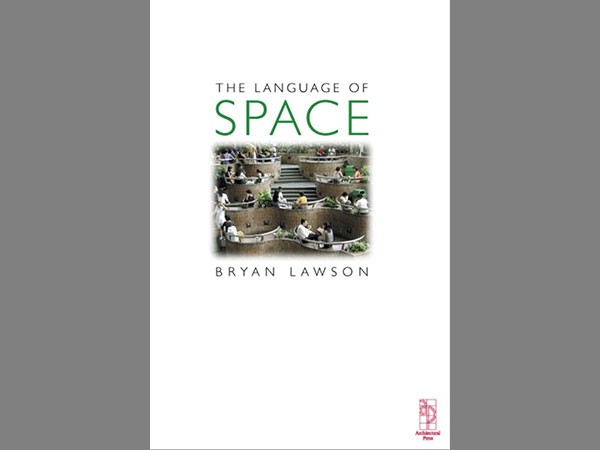
Author: Bryan Lawson (Routledge, 2001)
When one brings up the topic of communication, the first thing that often comes to mind is chatting with friends, writing a note, or the flurry of media we are bombarded with on a daily basis. Phones. Television. Advertisements. And all sorts of other electronic devices we have come to know and love. Rarely, if ever, does anybody bring up space. Yes, space. A little confused? Well, fortunately, Bryan Lawson has shared The Language of Space with us: a book that articulates how we use space as an everyday – and powerful – method of communication.
A brief reflection on a typical day’s worth of activities can conjure up the many ways space can be – and is – used. One cannot describe it much better than Lawson, himself:
We use the language of space….for many purposes. Through it we can express both our individuality and our solidarity with others. We can indicate our values and lifestyles, allegiances and dislikes. We can use it to help generate feelings of excitement or calm. We can communicate our willingness or otherwise to be approached, interrupted, greeted, and engaged in social intercourse. We can control the proximity of others. We can demonstrate our dominance or submission and our status in society. We can use it to bring people together or keep them apart. We can use it to convey complex collections or rules of acceptable behaviour. We can also use it on occasion to signal our intention to break those rules!
From the annoyance of a ‘close talker’ and the fundamentals of proxemics, to seating arrangements for collaboration and Bill Hillier’s space syntax, Lawson comprehensively slices across various facets of spatial communication, at a number of scales.
Although delving into the specifics is well beyond the scope of a simple book review, the chapter headings within will give you a sense of the cross-section of the topics covered: Space as Language; Space and the Human Dimension; Mechanisms of Perceiving Space; Four Ways of Perceiving Space; Space and Distance; Proxemics; The Territory; Space and Time; and Recording Space. Each chapter is divided into subsections for convenience and easy referencing, while images interspersed throughout speak well to the content.
Tackling such a colossal topic is certainly not for the faint of heart, and to my mind, Lawson does an excellent job of describing the complex issues around space in an meaningful way – highlighting the many things we take for granted on a daily basis and that, as a result, designers of the built environment often fail to address.
Although I would love to say that cities and architecture designed in the 14 years, since its initial publication, have done well to reflect the wonderful and nuanced understanding of the human dimension of space so well described in the book, even a quick glance at our everyday environments would clearly point to the opposite. This being the case, the content within The Language of Space is as relevant as ever – especially for students and professionals involved in planning and designing the built landscape, from interior designers to architects, planners to urban designers.
If the quantity of sticky tabs and notes written in the margins of the books on my shelves are an indication of quality content, then The Language of Space is surely one of the most useful and insightful books I have read. It will definitely be a solid reference for years to come.
***
For more information, visit the Routledge website.
**
Erick Villagomez is one of the founding editors at Spacing Vancouver. He is also an educator, independent researcher and designer with personal and professional interests in the urban landscapes. His private practice – Metis Design|Build – is an innovative practice dedicated to a collaborative and ecologically responsible approach to the design and construction of places. You can see more of his artwork on his Visual Thoughts Tumblr.

